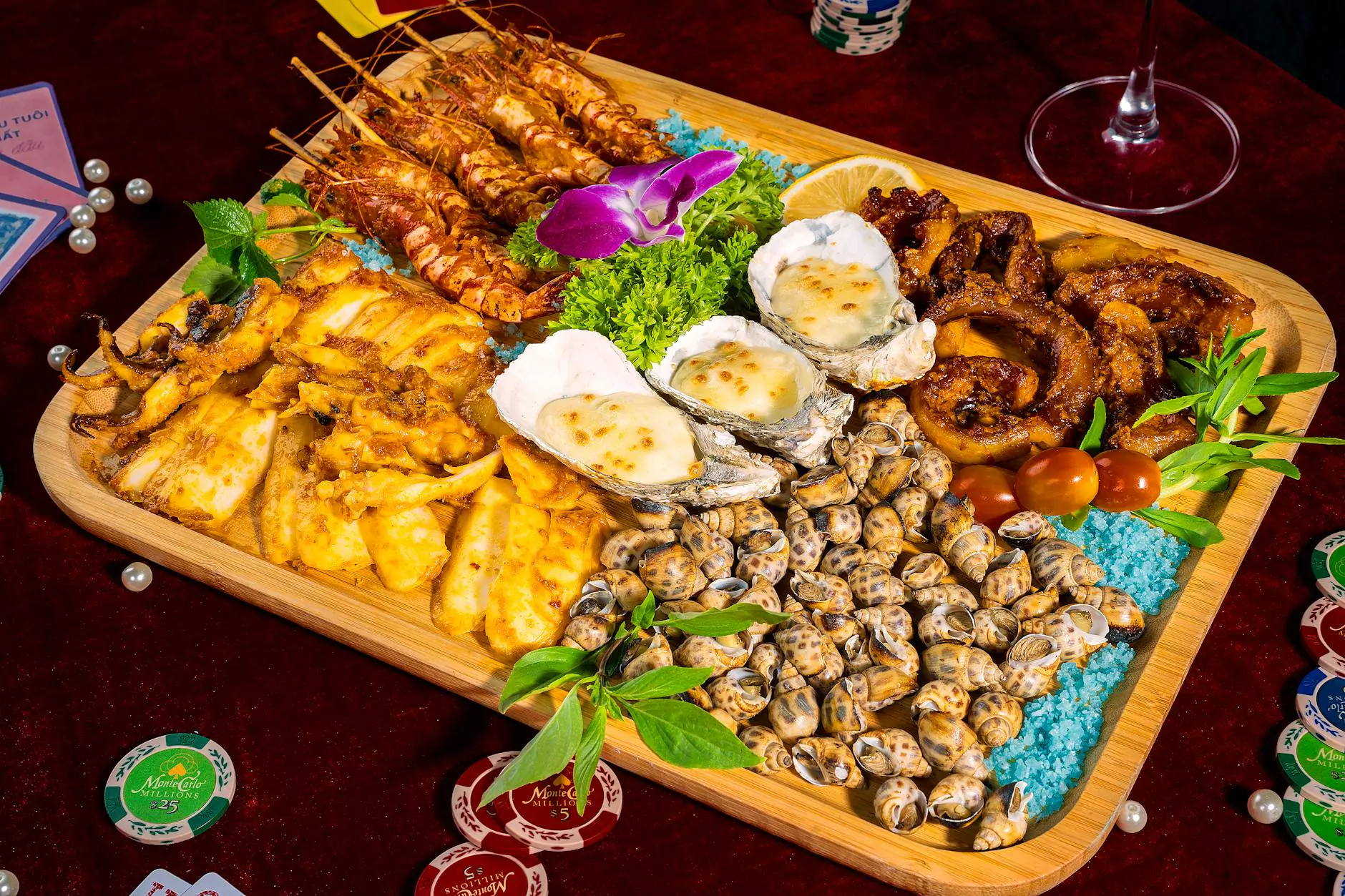The Manaslu Circuit Trek: A Definitive Guide to Trekking in the Nepal Himalayas

The Manaslu Circuit Trek is one of Nepal’s most celebrated high-altitude journeys, offering a sublime blend of dramatic mountain scenery, traditional Gurung villages, and a sense of remote, wilderness exploration. Whether you are a seasoned trekker chasing a demanding, off-the-beaten-path itinerary or a curious traveler seeking a deep cultural immersion, this trek delivers a uniquely rewarding experience. In this article, you will discover everything you need to know to plan an exceptional Manaslu Circuit Trek, from route options and best times to permits, acclimatization, gear, safety considerations, and sustainable travel practices. This guide is written to empower you with practical intelligence, rich details, and actionable steps so you can prepare confidently for your Himalayan adventure.
The Manaslu region sits at the heart of central Nepal, dominated by the towering massif of Mount Manaslu (8,163 meters), which translates to the “Mountain of the Spirit.” This is not just a challenge for the legs; it is a pilgrimage through landscapes of emerald terraced hills, glacial rivers, ancient mani stones, and monasteries perched above cloud-kissed valleys. The Manaslu Circuit Trek provides a complete spectrum of experiences: from bustling lowland villages and river crossings to pristine alpine meadows and high passes where the air thins but the views deepen. In short, it is a circuit that rewards patience, pacing, and a willingness to slow down in order to absorb the beauty and culture that unfold at each bend.
Why the Manaslu Circuit Trek Stands Out in the Nepal Himalayas
The Manaslu Circuit Trek is famous for its pristine, relatively uncrowded trails, which allow for a more intimate encounter with Nepali village life and a sense of genuine discovery. Here are the standout features that set this trek apart:
- Spectacular mountain panoramas featuring Manaslu, Ganesh Himal, Himal Chuli, and surrounding peaks that showcase varying light and color through the day.
- Rich cultural immersion in Gurung and Tibetan-influenced communities, with opportunities to learn about local customs, language, music, and cuisine.
- Authentic tea-house experience along much of the route, with simpler lodges that offer warm meals, local camaraderie, and cozy rooms after long days of walking.
- Challenging acclimatization and a high pass at Larkya La Pass (5,160 meters), which provides a rewarding payoff for the effort and a sense of achievement that few other Nepal treks can match.
- Conservation and minimal crowding compared to some of Nepal’s more famous circuits, allowing for a more tranquil, contemplative trekking atmosphere.
The Manaslu Circuit Trek also offers a strong focus on responsible travel and local economic benefits. Trek operators who operate in this region typically work closely with community-based programs, helping protect fragile ecosystems while supporting homestays, guides, porters, and tea-house owners. If you’re seeking a trek that balances adventure with cultural insight and ecological mindfulness, this circuit remains a standout choice.
Geography, Culture, and Landscape: What Awaits on the Route
The Manaslu region lies to the north-central part of Nepal, straddling the boundary between the Gorkha and Manang districts. The route meanders through remote valleys carved by ancient glaciers, with the terrain shifting from thick forests along the lower sections to stark, high-mountain terrain as you approach the high passes. In addition to Manaslu, you’ll glimpse peaks such as Ngadi Chuli (aka Peak Nine), Himal Chuli, and countless unnamed flanks that turn blue in the early morning light.
Culturally, the trek is a tapestry of Buddhism and Hinduism. Prayer flags flutter at almost every bend, mani stones line the trails, and monasteries glisten along ridge lines. The people you meet—local porters, guides, shopkeepers, and tea-house families—offer warm hospitality and stories about life in the mountains. The Manaslu Circuit Trek is not only about the scenery but also about the people who keep this land vibrant and alive through generations of mountain living.
The route threads through a series of settlements including Sotikhola, Machha Khola, Jagat, Deng, Namrung, Lho Gaon, Sama Gaon, Samdo, Dharmasala, and finally crosses the famous Larkya La Pass to reach Bhimthang (Bimtang) before winding down toward Dharapani and Besishahar. Each village offers a moment to pause—whether to share tea with a shopkeeper, chat with a child learning to greet visitors in English, or observe a festival that reveals the heart of the valley’s culture.
Best Time to Trek the Manaslu Circuit Trek
Timing is crucial for a successful trek in the Nepal Himalayas. The two most reliable windows are the post-monsoon autumn (late September to early December) and the pre-mmonsoon spring (March to May). Here’s why:
- Autumn (Sept–Nov): Clear skies, crisp air, and the most reliable views of high peaks. Trails are busy but well-supported by tea houses and guides. The risk of rain is lower, making trails safer and more enjoyable for most trekkers.
- Spring (Mar–May): Flowers bloom along the lower valleys, and daytime temperatures are warmer, easing the approach for those who prefer a milder climate. There can still be unsettled weather, but the scenery—especially rhododendrons in bloom—can be spectacular.
Winter (Dec–Feb) brings snow and icy trails in higher sections. It is possible with proper gear, but some teahouses may close, and day length is shorter. Monsoon (Jun–Aug) brings heavy rain and landslide risk, especially on the approach to lower passes; some sections can be slippery, and river crossings swell with runoff.
If you want to maximize safety and comfort, plan for autumn or spring, book with a reputable operator, and incorporate an acclimatization day into your itinerary to mitigate altitude-related risks.
Itinerary: A Comprehensive Day-by-Day Plan for the Manaslu Circuit Trek
The following is a detailed, representative 14- to 15-day itinerary for a classic Manaslu Circuit Trek, starting from Kathmandu and concluding in Kathmandu with a return to the capital. Individual schedules may vary, especially if you begin from different entry points (for example, starting near Arughat/Soti Khola instead of Kathmandu). The goal is to provide a robust framework you can adapt with your operator.
- Day 1: Kathmandu to Arughat (Soti Khola region) — Arrival into the starting valley Trek preparation night in Kathmandu is common; early morning drive to Arughat (roughly 5–7 hours, depending on road conditions). The road becomes rough as you near the foothills, and you’ll catch your first glimpses of the valley’s terraces and river systems. This day is about setting expectations, receiving a briefing from your guide, and acclimatizing to the Nepalese altitude gradually. Manaslu Circuit Trek begins here, with your entry into the quieter trails that lead toward the foothills of Manaslu.
- Day 2: Arughat to Soti Khola — First trekking day through river canyons The first leg follows the Budi Gandaki corridor, winding along a sequence of villages, fields, and forests before you reach Soti Khola. The day is moderate in elevation gain with plenty of opportunities to observe rural life and see the first glimpses of the surrounding peaks.
- Day 3: Soti Khola to Machha Khola — Forested valleys and river crossings Trekking from Soti Khola to Machha Khola offers more river crossings, rustic teahouses, and a chance to notice the changing flora as you ascend. The river remains a constant companion, its voice a reminder of the living mountain environment you inhabit for several days ahead.
- Day 4: Machha Khola to Jagat — Village life and suspension bridges The trail climbs through evergreen forests and across a series of bridges that arc over swift streams. The villages become more Tibetan-influenced as you approach higher elevations. The day ends in Jagat, a gateway village with stone houses and a sense of mounting anticipation for the high-country experience ahead.
- Day 5: Jagat to Deng — Into the higher reaches of the valley The path gradually rises toward the upper Manaslu valley. You’ll pass smaller settlements and a few prayer walls as you gain altitude and encounter a more rugged landscape.
- Day 6: Deng to Namrung — Elevation continues and cultural immersion deepens Namrung sits at an important cultural junction with views toward the Manaslu range. This is a day for adjusting to higher altitude and absorbing local customs, with a possible stop at a monastery along the way.
- Day 7: Namrung to Lho Gaon — Alpine meadows and evolving scenery This stage takes you into more alpine terrain, with glimpses of distant peaks and gorge-like scenery. Lho Gaon (Lho) is a traditional Gurung village with warm hospitality and a sense of remoteness that marks your gradual transition into the high country.
- Day 8: Lho Gaon to Sama Gaon — Close to the Manaslu massif The day’s route threads through dramatic landscapes, with the possibility of seeing glaciers and more dramatic mountain silhouettes. Sama Gaon sits at a strategic point before the crossing approaches the turn toward Samdo and beyond.
- Day 9: Sama Gaon to Samdo — Higher altitude and Tibetan-influenced culture Samdo is a frontier village famous for its fragrant juniper groves and close proximity to the Tibetan plateau. The air is thinner here, and the surrounding peaks offer a striking panorama as you prepare for the crossing.
- Day 10: Samdo to Dharamsala (Dharmasala) — Last layover before Larkya La This leg prepares you for the high pass. Dharamsala is a popular acclimatization stop with a strong sense of community and a chance to rest before the final ascent toward the pass.
- Day 11: Dharamsala to Larkya Phedi — Final acclimatization and trailhead A relatively short trekking day that brings you to the base of the famous Larkya La Pass, known locally as Larkya La. The surrounding snow-capped walls and glacial streams begin to dominate the horizon, signaling the upcoming challenge.
- Day 12: Larkya La Pass to Bhimtang (Bimtang) — Cross the pass, then descend into a new valley The highlight of this trek: crossing the Larkya La Pass (5,160 meters) early in the morning for the best light and visibility. After the pass, descend to the picturesque Bhimtang area, where you’ll find a small cluster of teahouses and a sense of relief after challenging altitude.
- Day 13: Bhimtang to Tilije — Descending and winding toward the lower villages This leg takes you through rolling highland terrain and into more expansive valleys. Tilije is a traditional village with a welcoming mood and the opportunity to rest properly before the final descent.
- Day 14: Tilije to Dharapani — Completing the high-to-low transition A long but enjoyable day of descent and cross-valley walking that brings you toward Dharapani, where the drainage and road networks begin to reappear, signaling that the trek is nearing its end.
- Day 15: Dharapani to Besisahar and balik to Kathmandu From Dharapani, you typically drive to Besishahar and then onward to Kathmandu, marking the conclusion of a memorable Manaslu adventure. If time allows, you can add an extra night in Kathmandu to recover and reflect on the journey.
Note: Individual itineraries may vary, and some operators offer 12- or 13-day versions by adjusting starting or end points (for example, starting from Sotikhola rather than Kathmandu or finishing in Besisahar instead of Kathmandu). The essential elements—Larkya La Pass crossing, the high-altitude acclimatization, and the immersion in Gurung culture—remain at the core of any Manaslu Circuit Trek.
Permits, Logistics, and Practical Planning
Trekking in the Manaslu region requires obtaining a few specific permits and understanding local regulations. Here are the typical permit requirements and practical planning tips you should know well in advance:
- TIMS Card (Trekkers Information Management System) — International trekker registration and safety registry. This is usually the first permit you obtain; costs around modest USD equivalents depending on your country of origin and operator specifics.
- Manaslu Conservation Area Permit (MCAP) — This permit supports conservation efforts in the Manaslu region. Pricing and procedures vary by year; your trekking operator can handle the formalities as part of your package.
- Restricted Area Permit (RAP) for Manaslu — The Manaslu region is designated as a restricted area; trekkers typically require a government-registered guide and a group entry permit. The RAP process includes coordination with local authorities and is usually organized by your trekking company.
- Guides and local support — Because the area is restricted and logistics are more complex than some other routes, most travelers trek with a licensed local guide and/or a group. This ensures safety, helps with navigation on high passes, and supports the local economy.
Costs and processing times for these permits can fluctuate with policy changes and seasonal demand. A typical approach is to work with a reputable operator who can secure all necessary permits on your behalf, coordinate a strong acclimatization plan, provide a qualified guide, arrange comfortable teahouse accommodations where possible, and ensure safety standards are upheld. For a well-supported trek, including guide, porter, meals, and permits, you should budget accordingly. In addition to permits, you’ll likely pay for or be included in a comprehensive package covering transport to the trailhead, return transport, and contingency plans.
Acclimatization, Safety, and Health Considerations
Acclimatization is a critical pillar of a safe Manaslu Circuit Trek. The high passes and the sheer altitude require deliberate pacing, rest days, and careful monitoring for symptoms of altitude sickness. A well-structured itinerary will include at least one acclimatization day in a town such as Namrung or Sama Gaon, allowing your body to adapt to progressively thinner air. Quick headaches, dizziness, nausea, fatigue, sleeplessness, and shortness of breath are signs to take seriously. If symptoms worsen, it’s essential to descend to a lower altitude and seek medical attention.
Practical safety tips include:
- Hydration: Drink plenty of water and avoid dehydration, which can worsen altitude symptoms.
- Food and rest: Eat well and get adequate sleep to help the body adjust.
- Gradual ascent: Do not push quickly to higher elevations; respect your body’s signals.
- Guide-led pace: Follow the guide’s pacing to manage acclimatization effectively.
- Medical kit: Carry basic medications for altitude symptoms, diarrhea, headaches, and a small first-aid kit with blister care.
- Emergency plan: Ensure you have clear emergency communication possibilities and know the location of the nearest medical facilities.
In addition to altitude considerations, the Manaslu region’s terrain includes river crossings, sometimes slippery trails, and occasional weather-induced disruptions. Current-season conditions can influence safety planning. Your guide will be the best source of advice, adapting the plan to the day’s weather and trail conditions.
Gear, Packing List, and Equipment Essentials
A well-chosen gear set is essential for comfort, safety, and enjoyment on the Manaslu Circuit Trek. Here is a practical packing guide that balances warmth, protection against the elements, and the realities of teahouse trekking:
- Clothing:
- Base layers (thermal tops and bottoms)
- Fleece or light down mid-layer
- Waterproof, windproof shell jacket and pants
- Insulated down jacket for evenings at higher elevations
- Lightweight hiking pants and durable trekking shorts (for lower elevations)
- Thermal socks and trekking socks (multiple pairs)
- Hat, gloves, neck warmer/balaclava
- Footwear:
- Sturdy hiking boots with good ankle support
- Trail runners or sandals for tea-house evenings
- Gear:
- Backpack (40–60 liters) with rain cover
- Water bottles and/or a hydration system
- Water purification method (filters, tablets, or purification drops)
- Headlamp with extra batteries
- map/guidebook or GPS (optional but helpful)
- First-aid kit, blister care, and personal medications
- Accessories:
- Sunscreen, lip balm, and sunglasses
- Camera, spare memory cards, and extra batteries
- Travel towel and basic toiletries
- Snacks and energy bars for long crossings
- Weather and environment:
- Packing for four seasons at different elevations
- Light rain gear (evening drizzle possible at lower altitudes)
When packing, aim for a balance between comfort and practicality. Tea-house stays vary in quality; many inns will provide basic hot meals and a simple room, but you should be prepared for cooler nights and higher winds as you gain altitude. Your guide can advise on what to bring based on current conditions and the exact route you will take.
Gear Considerations for a Comfortable and Safe Trek
In addition to the essentials listed above, consider including a few backup items that can significantly improve your comfort level on the trail:
- Sleeping bag liner for added warmth in the tea houses
- Emergency blanket in case of cold nights or delays
- Compact trekking pole pair for stability on rocky trails and steep descents
- Small duct tape and repair kit for quick fixes on gear
- Thermal blanket or emergency bivy for extreme conditions at high altitude
Packing a little lighter can help you move more efficiently, but do not sacrifice critical warmth or safety gear. Your trekking agency or guide will frequently provide guidance about what can be rented locally versus what you should bring yourself.
Culture, Etiquette, and Responsible Travel
A trip along the Manaslu Circuit Trek is not only about the ascent and the landscapes but also about respecting the local communities and the fragile environment. Here are practical ways to travel responsibly:
- Respect local dress codes and customs when visiting villages and monasteries.
- Ask permission before taking photos of people and sensitive cultural sites.
- Use local guides and porters; this supports families and keeps the benefits of trekking in the valley within the community.
- Dispose of waste properly; use designated bins and avoid leaving litter in the environment.
- Conserve water and energy; minimize plastic bottle usage by carrying a personal water bottle and purifier.
- Respect wildlife and avoid feeding animals; stay on marked trails to protect fragile habitats.
Responsible tourism enhances both conservation outcomes and cultural understanding, ensuring that future generations can continue to experience the awe of the Manaslu Himalayas.
Is the Manaslu Circuit Trek Right for You? A Quick Read on Difficulty, Fitness, and Preparation
The Manaslu Circuit Trek is a demanding but deeply rewarding journey. It requires a reasonable level of fitness, endurance for long days of walking, and the mental readiness to handle altitude and weather variability. If you are considering this trek, ask yourself:
- Are you comfortable walking for 6–8 hours per day on mixed terrain, step-skiing, and occasional steep ascents?
- Can you manage a few days of significant altitude gain with acclimatization days?
- Do you enjoy cultural interactions, tea-house stays, and a less touristy route compared to other Nepal circuits?
- Are you prepared to pace yourself and adjust plans for weather and trail conditions?
If the answer to these questions is yes, the Manaslu Circuit Trek is an excellent choice to experience the grandeur of the Nepal Himalayas in a profound and intimate way.
Frequently Asked Questions (FAQ)
- How long does it take to complete the Manaslu Circuit Trek?
- Most treks take 12–15 days, depending on the chosen start and end points, acclimatization days, and whether you include side excursions.
- Do I need a guide for the Manaslu Circuit Trek?
- Yes. Manaslu is a restricted area; a licensed guide is typically required. The guide helps with navigation, safety, acclimatization pacing, and interactions with local communities.
- What is the best time to trek?
- Autumn (Sept–Nov) and Spring (Mar–May) are the best windows due to reliable weather and clearer mountain views. Winter and monsoon seasons have more challenging conditions and limited trail access in some sections.
- Is it possible to trek independently on the Manaslu route?
- Independent trekking is usually restricted due to the area’s restricted status. Most travelers join a guided group or private guided trek through a registered operator.
- What is the most challenging part of the trek?
- The crossing of the Larkya La Pass (5,160 meters) is the highlight and the most physically demanding portion of the journey, requiring proper acclimatization and pacing.
Ranked Perspectives: How to Choose the Right Trek Operator
Selecting a reputable operator is critical for a successful Manaslu Circuit Trek. A good operator will:
- Provide an experienced, licensed guide fluent in the local culture and terrain.
- Offer a transparent itinerary with built-in acclimatization days and contingency plans.
- Ensure safety standards including emergency communication and trained first aid responders.
- Include sustainable practices that minimize environmental impact and maximize local involvement.
- Offer clear pricing with a breakdown of meals, lodging, permits, transport, and extras so you know what you are paying for.
It’s wise to read recent traveler reviews, confirm the operator’s affiliations, and ask for a clear description of inclusions and exclusions in the package. A well-chosen operator can turn a challenging journey into a smoothly managed expedition where the focus remains on the extraordinary natural beauty and cultural richness of the Manaslu area.
Final Thoughts: The Manaslu Circuit Trek as a Lifetime Experience
The Manaslu Circuit Trek encapsulates the best of Nepal’s high mountains: the breathtaking grandeur of peaks, the warmth of local communities, and the humbling sense of being small within a vast, ancient landscape. It is a trek that invites careful preparation, respectful travel, and a curiosity to learn. If you are looking for a path less crowded than Everest or Annapurna while delivering equal or greater sense of achievement, this circuit delivers on every count. With thoughtful planning, the right guide, and a spirit of adventure, you can complete a journey that will stay with you long after you descend from the high passes.
Conclusion: Start Planning Your Manaslu Circuit Trek Today
If you are ready to embrace an unforgettable Himalayan adventure, the Manaslu Circuit Trek offers a profound combination of natural beauty, cultural depth, and personal achievement. Begin by securing the proper permits through a reputable operator, plan for an adaptive itinerary with acclimatization days, assemble the right gear, and prepare to immerse yourself in a world where every turn reveals a new facet of Nepal’s stunning Himalayas. The journey awaits, and with the right preparation, you’ll carry back memories of a lifetime from the Manaslu Circuit Trek.









